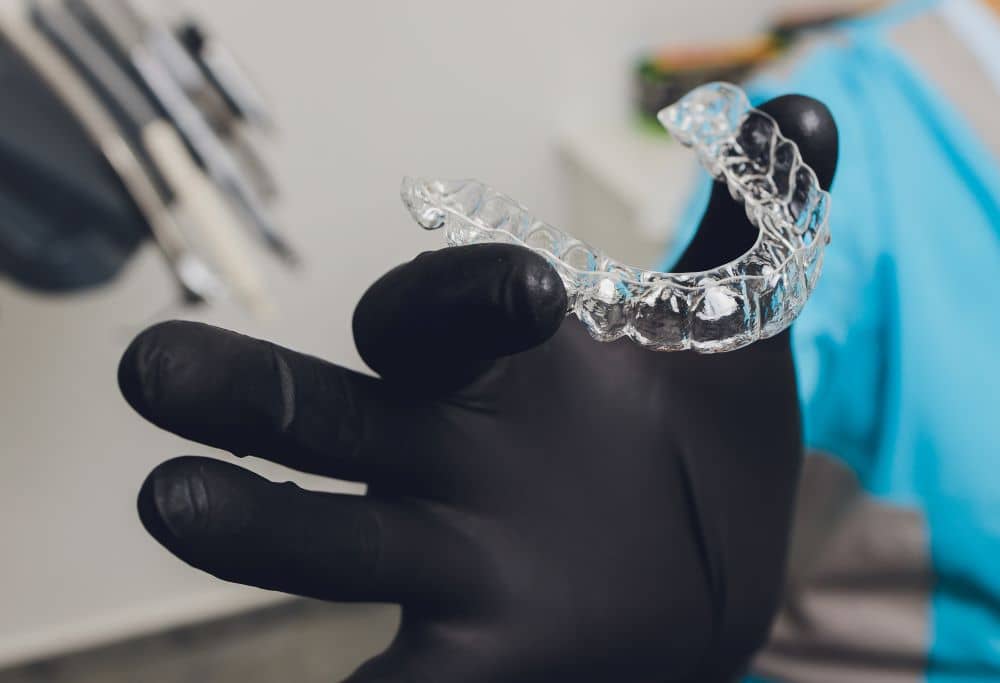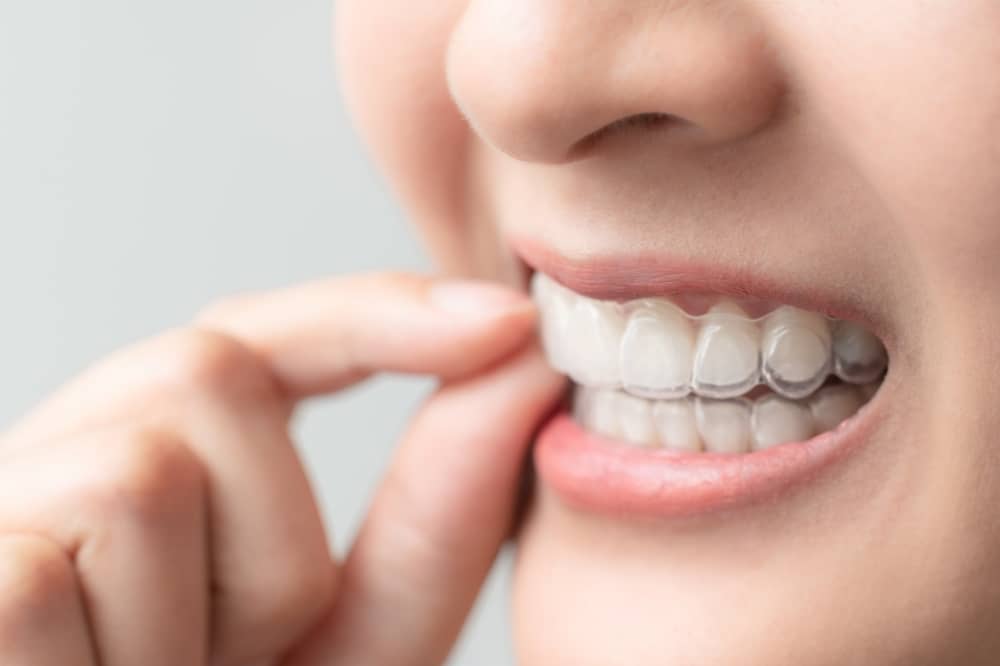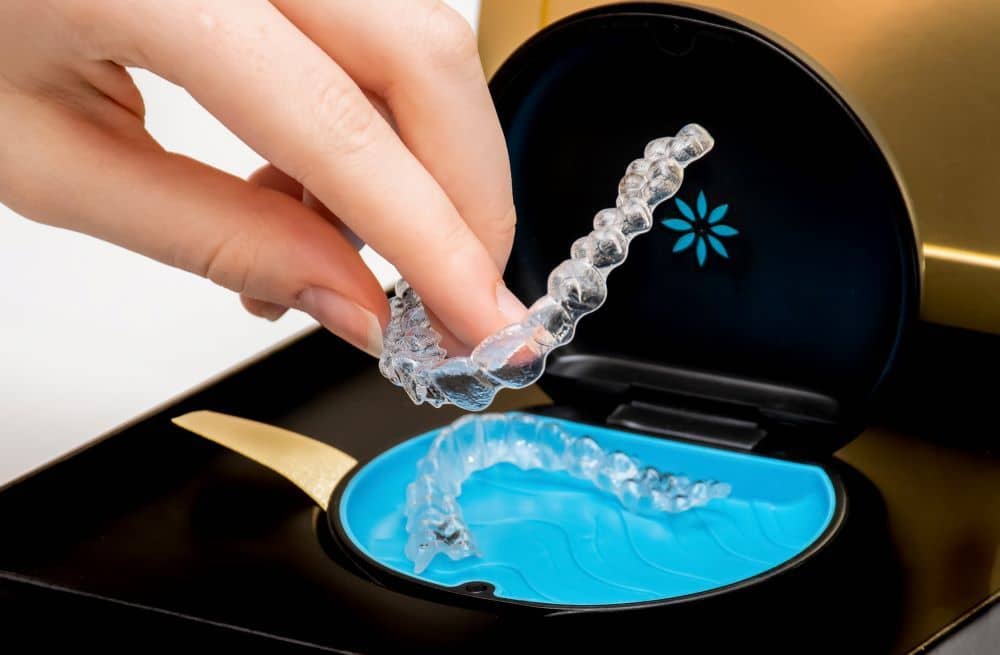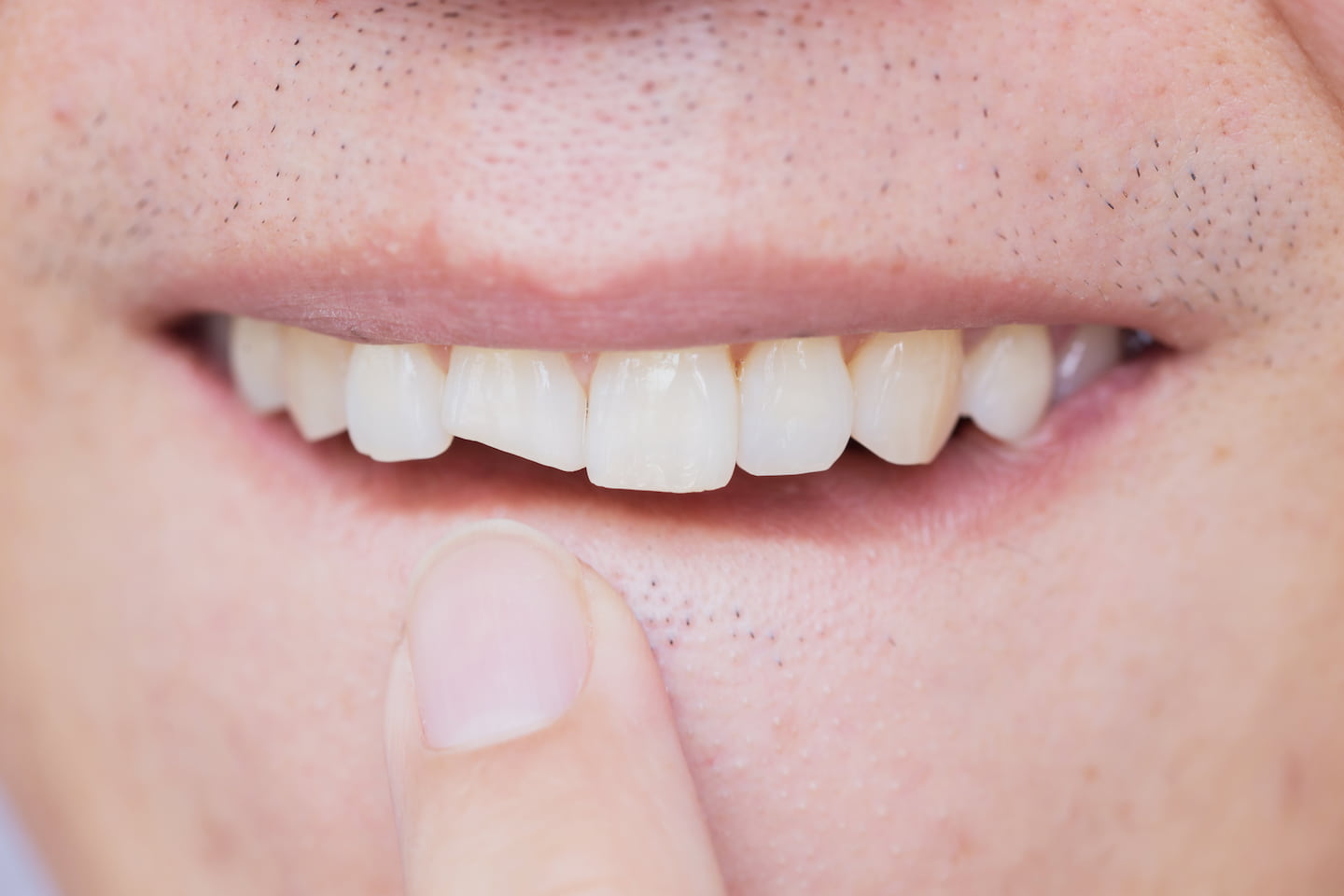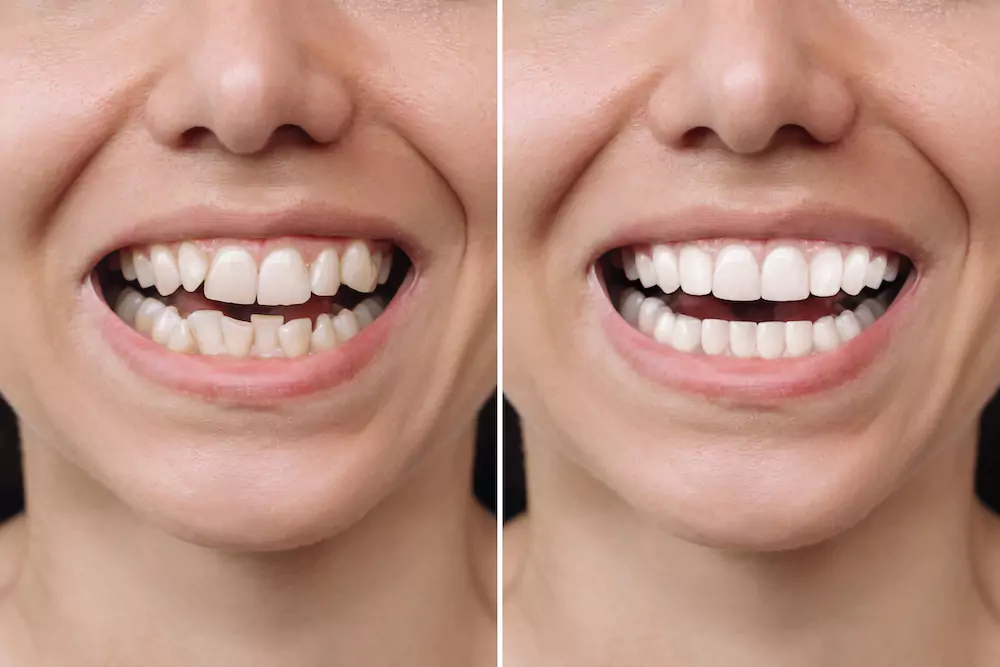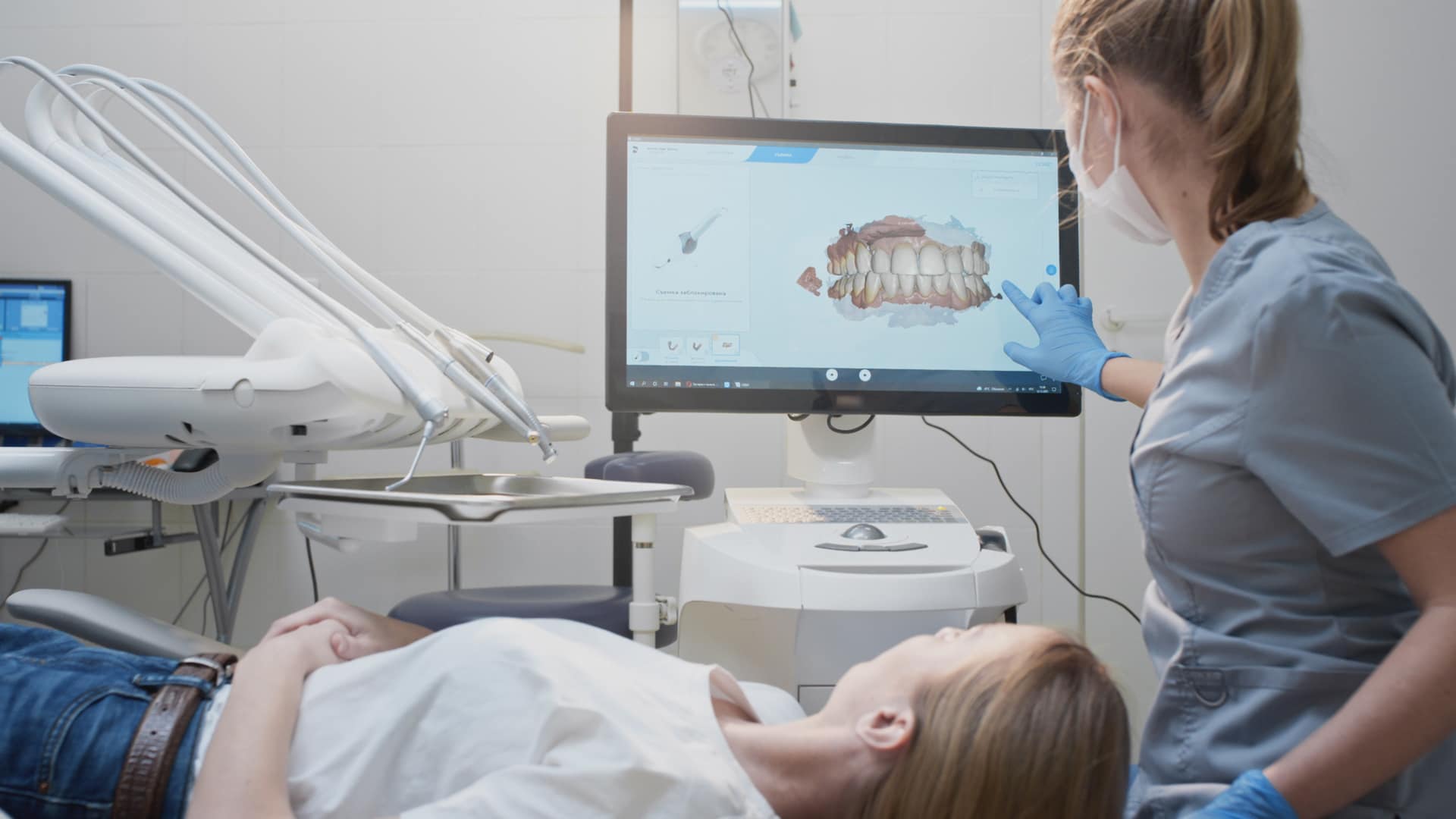
Are Invisible Aligners Effective?
If you have crooked or misaligned teeth, you surely want to straighten them. You either wear traditional metal braces or take advantage of a more discreet option, such as clear aligners.
Most people would choose clear aligners, such as Invisalign, to straighten or realign their teeth without worrying about visible wires. But are they effective? More importantly, are clear aligners the right choice for you?
What are Invisible Aligners?
Invisible aligners work just like conventional metal braces. This orthodontic treatment uses clear plastic trays (also called aligners) to straighten teeth. If you choose clear aligners, you will receive a new set of aligners typically once every two weeks or so, depending on your evolving bite.
The most popular brands are ClearCorrect, Invisalign, and Spark.
These aligners are made from a thermoplastic material. The purpose of these clear aligners is to provide a less conspicuous orthodontic treatment as an alternative to the very noticeable metal and wire braces. But here’s one thing that people should understand about invisible aligners. The truth is they are not entirely invisible, meaning you and other people can still see them on your teeth, especially at arm’s length distance.
Do Clear Aligners Work?
Aside from the aesthetic aspect, clear aligners are effective in straightening teeth. It works on various dental issues, including:
- Crowding where the teeth are bunched together, often due to lack of space in the mouth
- Gap teeth, which is a teeth-spacing issue
- Overbite (also known as buck teeth) where the upper teeth extend over the lower teeth more
than normal - Underbite, which is the opposite of overbite, where the lower teeth overlap the upper teeth
- Crossbite that causes the upper teeth to fit inside the lower teeth
- Open bite, which occurs when the upper and lower teeth do not meet
The types of malocclusion above can cause discomfort or difficulty chewing and speaking. If left untreated, they can lead to more serious issues, such as easily decaying teeth. In some cases, they can be the reason behind early tooth loss.
Depending on the severity, your bite may result in tooth enamel damage and even jaw problems. To answer the question above, invisible aligners are indeed effective. However, there are some cases when they fail, which we discuss further below.
In the beginning, these clear aligners could only treat a few specific issues. Patients with serious teeth crowding require the more traditional solution. Today, it’s a common misconception that clear aligners only work on minor problems because they can also be used on moderate to severe issues.
Think about it; some severe orthodontic concerns cannot be solved by metal braces alone. They require expanders, spacers, and sometimes, even the terrifying headgear. Therefore, issues that can normally be corrected using wires and brackets, such as gaps, crowding, and turned teeth, can also be fixed by clear aligners. Attachments, elastics, and other additions can help the appliance work harder to treat specific severe issues. Your dentist will tell you whether clear aligners are suitable for your case or not.
How Does Clear Aligners Work?
Clear aligner products utilise a series of plastic aligners that work to push teeth to achieve the desired alignment. With the 3D technology, dentists generate a step-by-step plan based on your dental issue and requirements. You will know exactly what to expect during the whole process.
The method of straightening the teeth is the same as traditional braces. The only difference is that there are no wires that push and pull teeth into the desired location. Instead of wires, you get a plastic tray that pushes and pulls your teeth, so you achieve better alignment.
Clear Aligners vs Metal Braces
Are you weighing the pros and cons of traditional braces vs clear aligners? For most people, it is not a difficult decision, especially with the help of their dentist. However, some cases require careful consideration. So, let us dive in and take a look at points that may give an advantage to one over the other:
1. Length of Treatment
Proponents of traditional braces argue that clear aligners take longer. Plastics are not as strong as metal, and therefore the push and pull effect is not as intense. Even though there is no question about the aligners’ effectiveness, they progress at a much slower rate compared to metal braces.
However, some studies challenge this claim. One of them was a 2019 study published in the BMC Oral Health journal, which stated that there seemed to be no statistical difference in the outcomes. In other words, Clear Aligners can work at the same pace as old-school orthodontia. The same study concluded that clear aligners offer shorter treatment durations than metal braces.
2. Comfort
A big draw of invisible aligners is that they are more comfortable than braces. They do not have wires and brackets that can poke and cause mouth sores. You can easily remove the trays whenever you are eating, which means you consume food just like normal. Additionally, you can brush and floss without those pesky wires.
On the other hand, wearing braces can make eating and speak less comfortable. Food can get stuck between the wires and can easily lead to discolouration if you often consume coffee, tea, and other coloured drinks and foods.
3. Aesthetics
Fewer people would choose to have a metal mouth over invisible plastic trays. The aesthetic factor is perhaps the most cited pro-clear aligners argument over braces. They are much less noticeable, which can help patients, especially teens, who are self-conscious about their smiles.
Adults love clear aligners because they do not have to worry about their clients and colleagues commenting about their current orthodontic treatment. If you take a picture of yourself, there isn’t much difference, except for the evident improvement of your teeth.
If clear aligners are not an option due to the complexity of your case, you may be interested in lingual braces. These braces are similar to invisible aligners in that they are unnoticeable. They are even more inconspicuous because they are completely hidden behind teeth. No one will know you are wearing metal wires.
4. Number of Consultations
Wearing braces requires you to go back to the dentist’s chair once a month. With clear aligners, most work occurs from the first to the second appointment. That’s when scanning and checking teeth for customised aligners take place. No adjustments are needed, unlike braces. You typically visit your dentist when it is time for a new set of plastic trays.
5. Cost
Clear Aligners are generally more expensive than traditional braces. However, due to the advances in technology, aligners are now made with effective yet less costly materials. The total expense will depend on a variety of factors, including your teeth problem. Some treatments are complicated and may need more than one dentist or dental professional to finalise the teeth positions.
For example, clear aligners are often costlier than metal braces. However, lingual braces are usually similar in price to clear aligners.
6. Effectiveness
Both invisible aligners and braces are certainly effective in straightening teeth. However, braces have a much lower chance of failing than aligners. The success of clear aligners relies on how disciplined the wearer is. Dentists suggest that you wear clear aligners for 22 hours each day. As much as possible, you should keep the trays over your teeth and only remove them when eating, brushing, and flossing.
Because traditional braces are not removable, they tend to fix teeth faster. There is also the risk of misplacing the clear plastic trays, which will not only lower the efficiency rate of the product but also adds to the total cost of the treatment.
Can Clear Aligners Fail?
A high level of patient compliance is a must for clear aligners to work as intended. The ability to remove the dental trays is often a double-edged sword. It’s pertinent that you stick to the rules of wearing the aligners, including the minimum number of hours you should wear them every single day.
Since they can be removed so effortlessly, some people forget to put them back. While it may not have a negative effect on the treatment efficiency and duration, it can quickly become a habit. Enough time out of the aligners can lengthen the treatment. Worse, the progress may halt or even cause problematic
shifting of the teeth.
Another reason why some aligners do not work is the maintenance process. If you do not follow your dentist’s directions in taking care of your aligners, there could be some issues. For example, placing the aligners in hot water to clean and disinfect them is a big no-no. Doing so will certainly compromise the plastic, altering how the trays fit your teeth. You will most likely have to get a replacement.
How complex your dental problem is can also affect the effectiveness of clear aligners. Simple gaps and mild under or overbites can be treated quicker than moderate cases. Your age and sex may also influence your progress. In this study, teeth tend to move faster in people around 35 to 50 years old. Therefore, this is the age group that may benefit the most from clear aligners. The same study also points out how men’s teeth declined more than women’s, particularly those around the ages of 50-70.
Are Clear Aligners for You?
A lot of people are good candidates for wearing clear aligners. However, the best and most reliable way to find out whether it is suitable for you is to talk to your dentist. Schedule an appointment with your friendly dentists in Canning Vale at Genesis Dental today.
